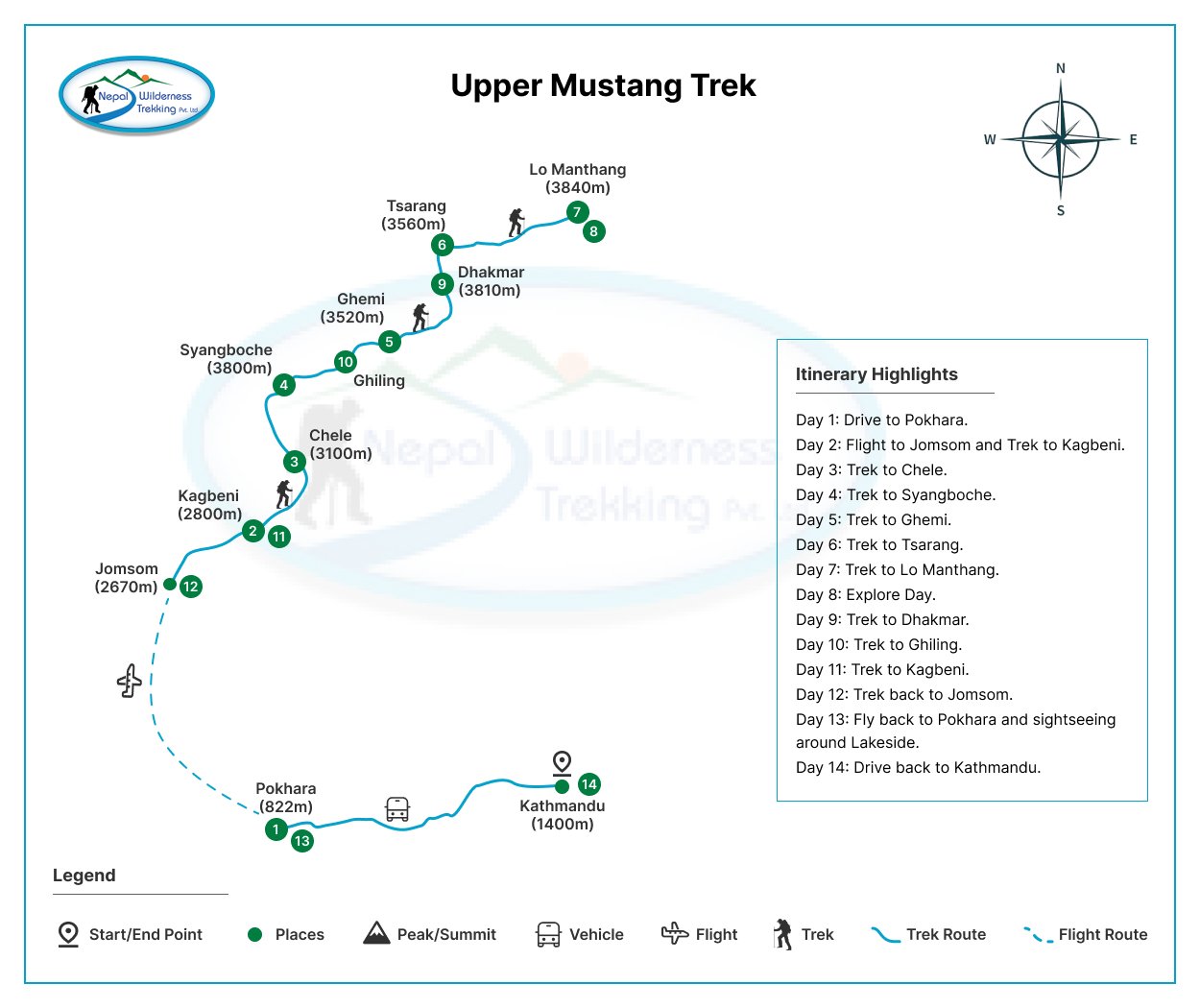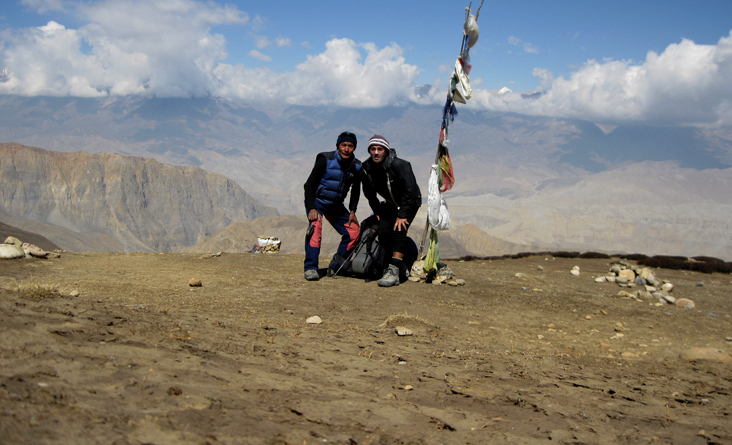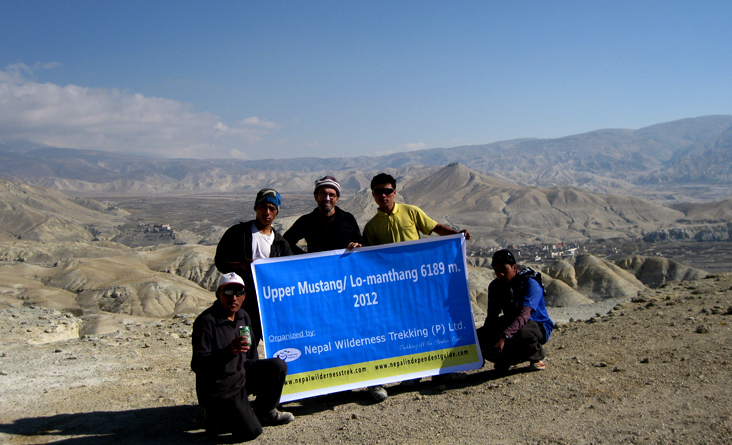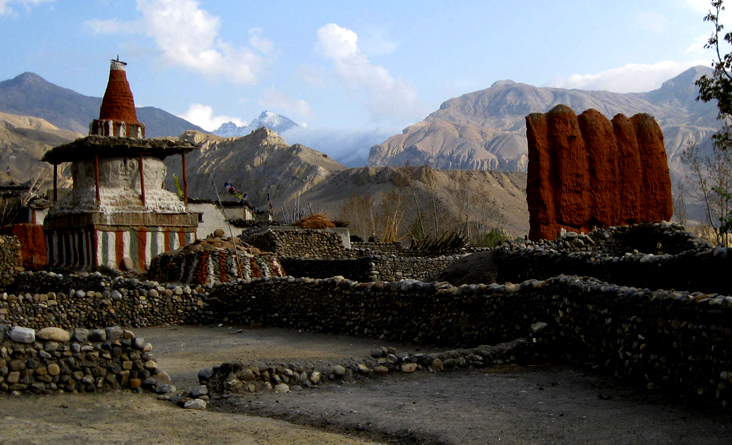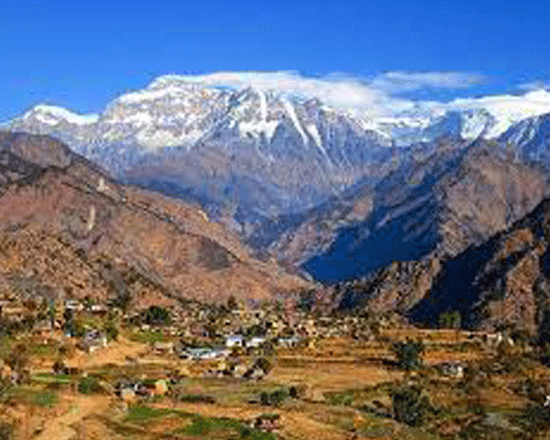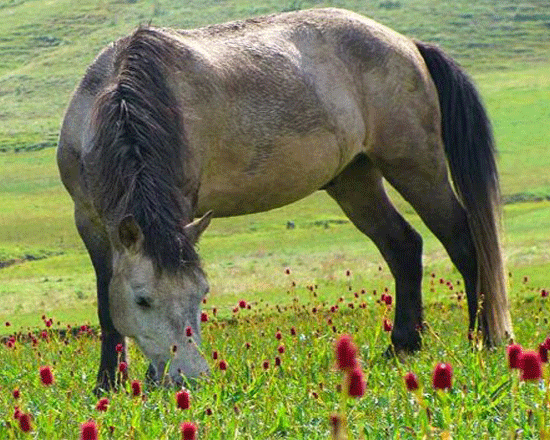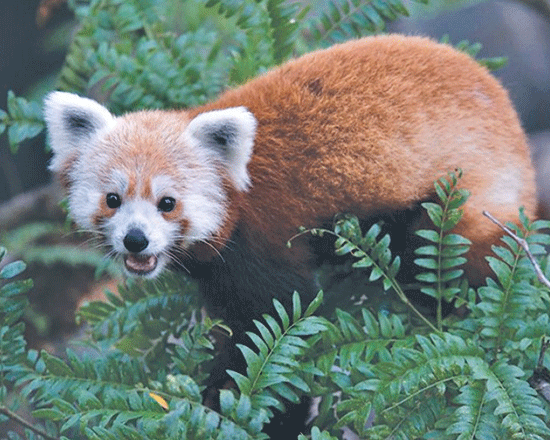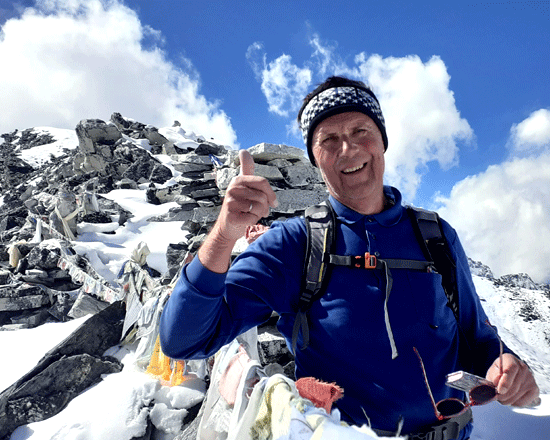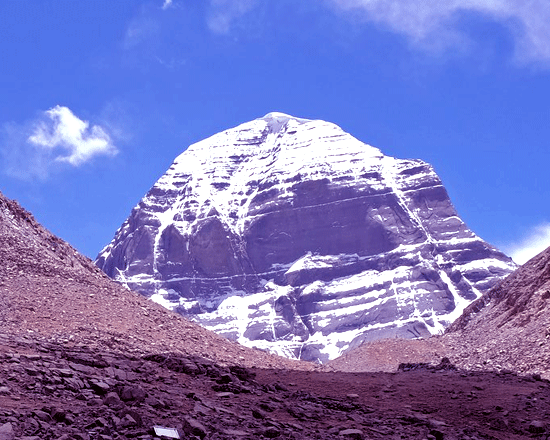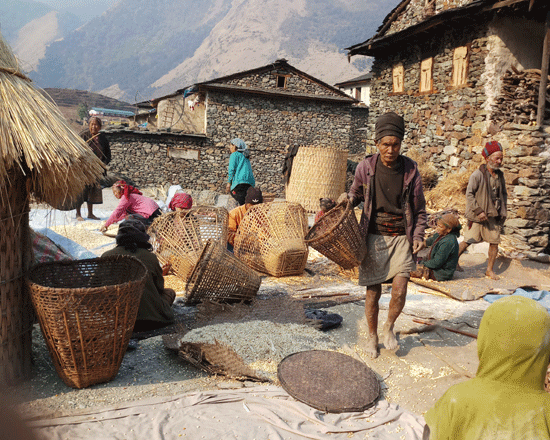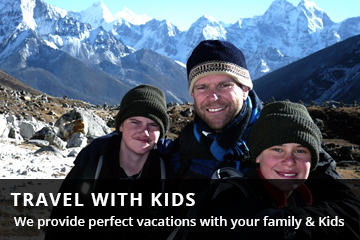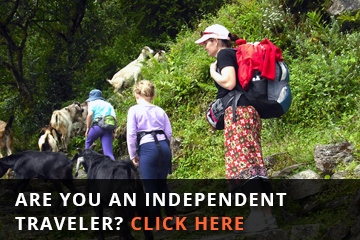Upper Mustang Trek
Upper Mustang Trek
Wilderness TrekkingTrip Facts
Since the terrain can be hard and the days long, hikers on these treks should be in good physical condition and have some previous mountain walking experience. Steep climbing may be involved, although it is never necessary to use ropes. Treks at this level can he arranged for periods of 16 to 21 days. Typically, a gradual ascent through a green river valley will lead you up to a number of high passes, where you will reach the altitude of 5416m. Often times, you will get a close insight into the Tibetan culture. Participants should expect to trek above 5416m/17872ft.
Mode of Travel : Flight/Land100%
Overview
The Mustang Trek 14 Days Package Itinerary
Upper Mustang Trek offers a captivating journey into the Mysterious region of the ancient Buddhist valley of Mustang. Its remoteness is unparalleled, ensuring that Mustang has remained preserved from the waves of mass tourism, earning it the distinction of being the ultimate guardian of traditional Tibetan culture. Venturing through the Upper Mustang presents an awe-inspiring experience in the Himalayas, focusing on a tapestry woven from a deep, intricate, and storied history.
Exploration of the Upper Mustang Forbidden Kingdom
The Upper Mustang Trek known as the “Forbidden Kingdom,” adventurers to a once-restricted region that opened its doors to outsiders in 1992. This journey provides a unique chance to get into a land surrounded by mystique and frozen in history. Unveils the secrets of this ancient kingdom, navigate through its striking desert landscapes, and be captivated by the ethereal glory of the Mustang region.
Scenic Wonders Mustang area
The Mustang Trek treats you to breathtaking scenes at every turn. The glamorous of the Annapurna range, Nill Giri Himal and Dhaulagiri ranges strike your eye as you trek through rugged trails, deep Kaligandaki river canyons, and wind-swept valleys. The contrasting landscapes, from arid desert-like plains to lush oases, create a visual tapestry that will leave you in wonder.
Cultural Immersion of Upper Mustang Trek
The Mustang region is rich in the cultural heritage and religion of Thakali and Tibetan Gurung people and is strongly influenced by Tibetan Buddhism. During the trek, one will encounter ancient monasteries, Chortens, and caves adorned with intricate murals and religious artifacts. Interact with the warm and welcoming local people, who have preserved their unique traditions and way of life for centuries. Gain insights into the vibrant Tibetan-influenced culture as you witness traditional ceremonies and experience the locals’ hospitality.
Lo Manthang – The Ancient Capital
Lo Manthang, nestled in Mustang, Nepal, boasts an ancient enclosed city embraced by 14th-century mud-brick walls. With deep ties to Tibetan Buddhist culture, the town features monasteries, temples, and cherished traditions. The annual Tiji Festival enchants mask dances and rituals. Unique architecture, including cave dwellings, graces the remote, dry landscape surrounded by the Himalayas. Once it was a restricted zone due to historical and border significance, a special permit was needed to access Lo Manthang. Preserved architecture and cultural heritage provide a window into its history and way of life. The Upper Mustang trek leads to this legendary dry city, the former capital of the Mustang Kingdom. Wander narrow alleys, visit the 15th-century royal palace, and delve into history, mythology, architectural heritage, and ancient traditions for a captivating journey through time.
The Tiji Festival of Mustang
The Tiji Festival is an annual event in Lo Manthang, celebrated for three days around late April to early May. Rooted in Tibetan Buddhist mythology, it features mask dances depicting deities and demons, symbolizing the triumph of good over evil. The festival includes religious rituals, prayers, and communal gatherings, showcasing cultural heritage and spiritual significance. Tourists are drawn to its vibrant performances and unique atmosphere, but respectful engagement with local customs is essential.
Natural Splendors
Regardless of its barren appearance, the Mustang boasts surprising natural beauty. Traverse the Kali Gandaki River Gorge, the deepest gorge in the world, and witness the dramatic erosion patterns carved by wind and water. Encounter unique rock formations, hidden caves, and ancient fossils, revealing the geological wonder of the region.
Farming Crops in Mustang
Upper Mustang Agricultural Farms, cultivate exceptional crops in the stunning region of Upper Mustang. The farms specialize in sustainable farming practices, actively ensuring the growth of high-quality and organic produce. From Cultivating aromatic herbs and nutritious grains like barley and buckwheat to tending vibrant vegetables. They actively engage in the careful harvesting and packaging of their diverse range of crops to maintain their freshness and nutritional value. Additionally, they actively prioritize the growth of exquisite high-altitude fruits like apples and apricots. Upper Mustang Agricultural Farms strives to provide the local markets with the finest, farm-fresh produce while promoting sustainable farming practices.
Mustang Trek Experience the warm hospitality of the local people as you stay in authentic tea houses along the trekking route. These charming accommodations provide comfortable lodging, delicious meals, and a chance to connect with fellow trekkers. Share stories around cozy fireplaces, savor traditional Nepali cuisine and feel at home amidst the rugged wilderness.
Lo Manthang side trip:
Experience the captivating side trip from Lo Manthang to Closer Monastery and Cave, the Lo Manthang journey that takes you through picturesque landscapes of yak and horse grazing on the arid high-range plateau. This remarkable region showcases gray mountainous valleys reminiscent of the renowned Upper Dolpo Trek, providing a unique and unforgettable experience. Just a short 4-hour bike ride from Lo Manthang lies the Kara La Pass, which marks the border with China. Many adventurous Nepalese bike riders embark on this thrilling snow-filled expedition, making it a popular destination for bike tours. Immerse yourself in the beauty of this untamed terrain and embark on an exhilarating adventure like no other.
Journey to Kagbeni: Connecting Lower Mustang and Thorong La Pass
Holi lake Damodar Kunda
Damodar Kunda is one of the revered holy lakes and spiritual meditation sites in the upper Mustang region, associated with the concept of Shangri-La. Located 40 kilometers from Lo Manthang, Damodar Kunda holds immense significance for religious and natural qualities. Sometimes people see the unseen Spiritual yogis in meditation at this place. This makes it a notable destination for those seeking a deeper connection with the region’s spiritual and natural wonders due to its proximity to Lo Manthang. You could also include this area in your Mustang trekking itinerary.
Damodar Kunda is a route to access the Nar and Phu villages, with the journey leading through the Saribung Pass. This path allows travelers to explore the scenic beauty trails and poons while connecting with the unique cultures and lifestyles of Nar and Phu. The route via Damodar Kunda and Saribung Pass provides an opportunity for an enriching and adventurous trekking experience.
Best season for Trek to Mustang
The Upper Mustang Trek, the optimal time is during the monsoon season from May to October. This rain shadow region experiences minimal rainfall, making it perfect for trekking. This period is also suitable for other treks like Upper Dolpo and Annapurna Circuit. While spring and autumn are recommended for Nepal treks, Upper Mustang’s rain shadow allows for monsoon exploration. It can also be combined with the Annapurna Circuit Trek by crossing Thorong La Pass or integrating it anti-clockwise.
Responsible Trekking
Experience the 14-day Upper Mustang package itinerary led by the expert team at Nepal Wilderness Trekking, committed to responsible and sustainable tourism. Our experienced guides prioritize eco-friendly practices, ensuring the trek respects the delicate ecosystem and local communities. We encourage trekkers to embrace the Leave No Trace principles, minimizing their environmental impact and preserving the pristine beauty of the Upper Mustang trek.
Conclusion
The Upper Mustang Trek is a once-in-a-lifetime adventure that takes you into the heart of an ancient kingdom, steeped in history, culture, and natural wonders. Let Nepal Wilderness Trekking be your trusted companion as you explore the mystical landscapes of the Upper Mustang. Our experienced team will ensure your safety, comfort, and a truly immersive experience in this enchanting region. Get ready to create lasting memories as you embark on a journey of discovery and self-reflection amidst the rugged beauty of the Upper Mustang.
Upper Mustang trek permit cost details.
- Annapurna Conservation Area Permit (ACAP):
-
You need the Annapurna Conservation Area Permit for various trekking routes in the Annapurna region, including sections of the Upper Mustang trek.
- The cost of the ACAP for foreign nationals is USD 30. This permit is essential to ensure the conservation and sustainable management of the natural resources and biodiversity in the region.
-
- Trekkers’ Information Management System (TIMS) Card:
- The TIMS card is a registration card that provides essential details about trekkers, their trekking routes, and emergency contacts for safety purposes.
- The cost of the TIMS card for foreign trekkers is USD 20.
- The TIMS card helps authorities keep track of trekkers in the region and provide necessary assistance if needed.
- Restricted Area Permit (RAP) for Upper Mustang Trek:
- The Restricted Area Permit (RAP) is the main permit required for trekking in Upper Mustang.
- the cost of the RAP for foreign nationals was around USD 500 for a 10-day trek. If you wished to extend your stay beyond 10 days, additional fees were applicable at $50 per day.
-
The Department of Immigration in Kathmandu or the local immigration office in Pokhara issues the RAP. A registered trekking agency in Nepal provides this, and you need to submit a copy of your passport and other necessary documents for processing.
Detail Itinerary
- Day 1: Drive from Kathmandu to Pokhara Take an early morning tourist bus drive which takes about 6-7 hours. You can spend the rest of the day exploring Pokhara, a beautiful lakeside city.
- Day 2: Flight to Jomsom and Trek to Kagbeni Take an early morning flight from Pokhara to Jomsom, which takes about 20 minutes. Start trekking towards Kagbeni, a beautiful village located at the entrance of the Upper Mustang. (2,800m/9,186ft) (estimated trekking time: 3-4 hours)
- Day 3: Trek from Kagbeni to Chele Continue trekking along the Kali Gandaki River towards Chele, passing through beautiful landscapes and ancient monasteries. (3,050m/10,006ft) (estimated trekking time: 5-6 hours)
- Day 4: Trek from Chele to Syangboche Trek through beautiful landscapes, (3,475m/11,398ft) (estimated trekking time: 6-7 hours)
- Day 5: Trek from Syangboche to Ghemi Continue trekking through stunning landscapes towards Ghemi, a beautiful village that is home to several ancient monasteries. (3,520m/11,546ft) (estimated trekking time: 5-6 hours)
- Day 6: Trek from Ghemi to Tsarang Trek towards Tsarang, passing through beautiful landscapes and ancient monasteries along the way. (3,560m/11,680ft) (estimated trekking time: 4-5 hours)
- Day 7: Trek from Tsarang to Lo Manthang Trek towards Lo Manthang, the cultural and political capital of Upper Mustang, passing through beautiful landscapes and ancient monasteries. (3,840m/12,598ft) (estimated trekking time: 5-6 hours)
- Day 8: Explore Lo Manthang Take a rest day to explore Lo Manthang, including the Royal Palace and the ancient monasteries.
- Day 9: Trek from Lo Manthang to Dhakmar Begin your return trek towards Jomsom, passing through beautiful landscapes and ancient monasteries along the way. (3,810m/12,500ft) (estimated trekking time: 6-7 hours)
- Day 10: Trek from Dhakmar to Ghiling Continue trekking towards Jomsom, passing through beautiful landscapes and ancient monasteries along the way. (3,806m/12,484ft) (estimated trekking time: 5-6 hours)
- Day 11: Trek from Ghiling to Kagbeni Trek towards Kagbeni, passing through beautiful landscapes and ancient monasteries along the way. (3,050m/10,006ft) and drive back to Jomsom (estimated trekking time: 6-7 hours)
- Day 12: Trek back to Jomsom 4-hour hike Stay overnight at the lodge
- Day 13: Fly back to Pokhara and sightseeing around Lakeside.
- Day 14: Drive to Kathmandu by tourist bus at 7:30 am and transfer to the hotel.
Cost Included
- Two nights clean hotel in Pokhara on b/b plan at Lakeside in Pokhara.
- Italian, Chinese, Nepali, Indian, and many other European Delicious Meals three times a day (Breakfast, lunch, and dinner chosen by Menu)
- Clean Lodge accommodation during the trekking.
- Experienced English-speaking trekking guide licensed by the government, familiar with the area.
- One porter for every two to three participants. (Note: An additional cost applies for solo clients requiring a porter.)
- Guide and other staff's food, flight, accommodation, salary, insurance, transportation, and equipment.
- Kathmandu- Pokhara- Kathmandu by tourist bus.
- Pokhara- Jomsom- Pokhara flight tickets.
- Taxi from and to the domestic airport in Pokhara.
- The Mustang special permit.
- ACAP( Annapurna Conservation Area Project).
- TIMS Permit
- First aid medical box
Cost Excluded
- Accommodations in Kathmandu
- all beverages Hard and soft table drinks such as Coke, Fanta, mineral, tea, coffee, water, and beer.
- Personal Travel insurance.
- Rescue operation.
- International airfare.
- Nepal tourist visa fee ( $ 25 for 15 days and $ 40 for 30 days multiple entry visas)
- Tips for guide and porter
- Excluded are all costs and expenses not listed under "cost includes"
- Inclusion of costs or delays beyond the control of the management, such as landslides, weather conditions, itinerary modifications due to safety concerns, illness, changes in government policies, strikes, etc.
Trip Map
